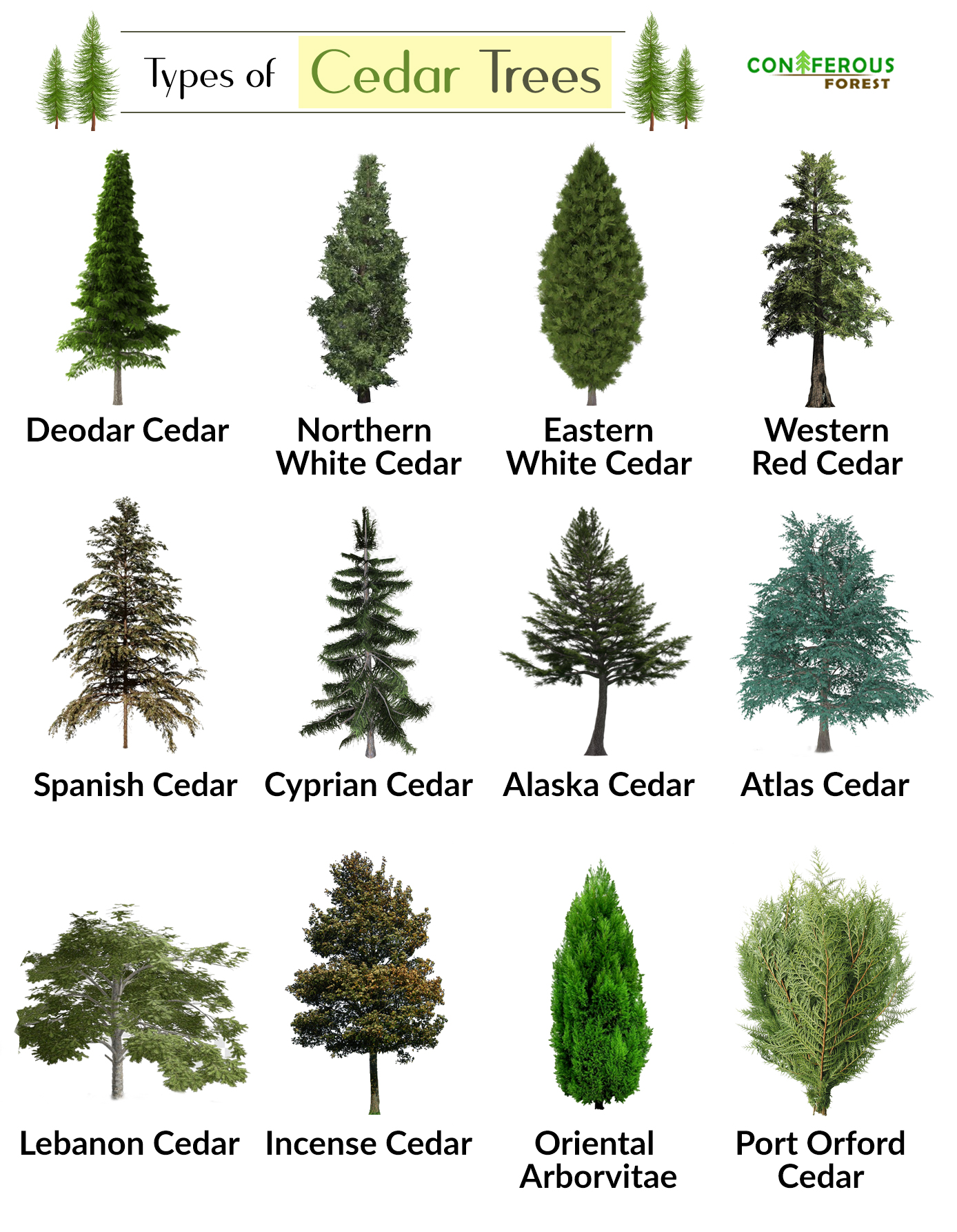Cedar
Cedar Tree: Iconic Evergreen of Ecological Importance
Imagine walking through an ancient forest, the air thick with the rich, aromatic scent of cedar. The towering Cedar Tree, with its thick, square-cracked bark and evergreen needles, stands as a sentinel of time. Known for its majestic height and enduring strength, the Cedar is a tree that has captivated humans and wildlife alike for centuries.
The Cedar Tree (Cedrus spp.) is more than just a towering evergreen—it’s a symbol of resilience and longevity. Found in the rugged mountains of the Mediterranean and the Western Himalayas, the Cedar has stood the test of time. Revered for its wood, which has been used for everything from shipbuilding to furniture, and its role in the ecosystem, the Cedar thrives in temperate climates and continues to be a key figure in both human history and nature. With its unique features, such as its aromatic wood and thick, scaly bark, the Cedar is a tree that demands respect.
Cedar is any of the species of tall ornamental conifers that belong to the family Pinaceae, found in the mountainous regions of the Mediterranean Basin and Western Himalayas. These trees are commonly used for decorating gardens and designing landscapes, thriving in temperate zones where the temperature does not fall below -25 °C in the winter.
Scientific Classification | |
| Kingdom | Plantae |
| Clade | Tracheophytes |
| Division | Pinophyta |
| Class | Pinopsida |
| Order | Pinales |
| Family | Pinaceae |
| Subfamily | Abietoideae |
| Genus | Cedrus |
List of Different Types of Cedar Trees
The Cedrus genus is categorized into four different species, including:
- Atlas cedar (Cedrus atlantica)
- Cyprus cedar (Cedrus brevifolia)
- Deodar cedar (Cedrus deodara)
- Lebanon cedar (Cedrus libani)
Apart from these ‘true’ cedars, some groups of trees and plants are also commonly described as a cedar in the US. These ‘false’ cedars are categorized into several families including Cupressaceae, Meliaceae, Surianaceae, Lycopodiopsida, Cephalotaxaceae, Caryophyllaceae, and Bignoniaceae. Some of the different types of ‘false’ cedar species that are commonly observed include conifers and flowering trees.
Conifers include Bermuda cedar (Juniperus bermudiana), Atlantic white cedar (Chamaecyparis thyoides), eastern red cedar (Juniperus virginiana), Japanese cedar (Cryptomeria japonica), eastern white cedar or northern white cedar (Thuja occidentalis), mountain cedar (Juniperus ashei), western red cedar (Thuja plicata), and port orford cedar (Chamaecyparis lawsoniana).
Quick Information | |
| Tree Type | Evergreen coniferous |
| Identification | Height: 98-130 ft (occasionally 197 ft) Leaves: Needle-like, arranged in open spiral form, 8-60 mm long Trunk Diameter: About 8-10 ft (2.5-3 m) Bark: Square-cracked or thick ridged Cones: Barrel-shaped, 3-8 cm broad, 6-12 cm long Seeds: 10-15 mm long, with wing-size of 20-30 mm Branches: Broad, horizontal Crown: Conical when young, broad and flat when fully grown Pollen cones: Slender, oval-shaped, 3-8 cm long |
| Distribution | Southern and South-Eastern Mediterranean, Western Himalayas |
| Habitat | Mediterranean: 1,000-2,200 m Himalayas: 1,500-3,200 m |
| USDA Hardiness Zone | 2-9 |
| Growth Rate | Moderate to high |
| Lifespan | 100-150 years, some can live up to 300 years |
| Growing Conditions | Sunlight: Prefers full sun to partial shade Soil: Slightly burned or tilled, well-drained, moist Water: 1 inch per week in dry seasons |
| Drought Tolerance | Moderate |
| Diseases & Pests | Seiridium canker, keithia blight, cedar apple rust or orange ball fungus, cedar quince rust, cedar hawthorn rust, gray mold, armillaria root rot, defoliation by bagworms |
| Reproductive System | Monoecious |
| Propagation | Through stem cuttings |
| Wildlife Value | Stems and roots of seedlings are consumed by the larvae of turnip moth and pine processionary; several bird and mammal species eat cedar berries |
| Cultivars | 1.Glauca Pendula 2.Argentea Fastigiata 3.Roman Gold 4.Emerald Falls Pendula 5.Curly Locks 6.Green Prince 7.Stenocoma |
| Uses | Cedar oil and wood are natural moth repellents, used for making shoe trees, developing a bonsai tree |
| IUCN Conservation Status | 34 percent of the conifers including cedars are now on the brink of extinction |
Interesting Facts About Cedar
- Only the male trees yield pollens. The females, on the other hand, yield berries containing seeds.
- Although some species of true cedars are acclimatized and found in the US, none of the species are native.
- As a defensive adaptation against squirrel predation, its seeds consist of two or three blisters, which contain a bad-tasting resin.
- Even though they are not even conifers, some flowering plants and trees are still commonly called cedars. These include Spanish cedar, Ceylon cedar, and bay cedars.
Summary
The Cedar Tree is not only a striking presence in the landscape, but it is also a crucial component of its environment. From its towering height to its distinctive bark and cones, these ancients offer much to admire. It provides habitat for wildlife, its wood and oils have been used by humans for millennia, and its resilience in harsh climates has earned it a place in both ancient cultures and modern conservation efforts. However, with increasing threats to coniferous forests globally, understanding and protecting the Cedar is more important than ever. By supporting sustainable forestry practices and conservation efforts, we can ensure that this majestic tree continues to thrive for generations to come.
References




